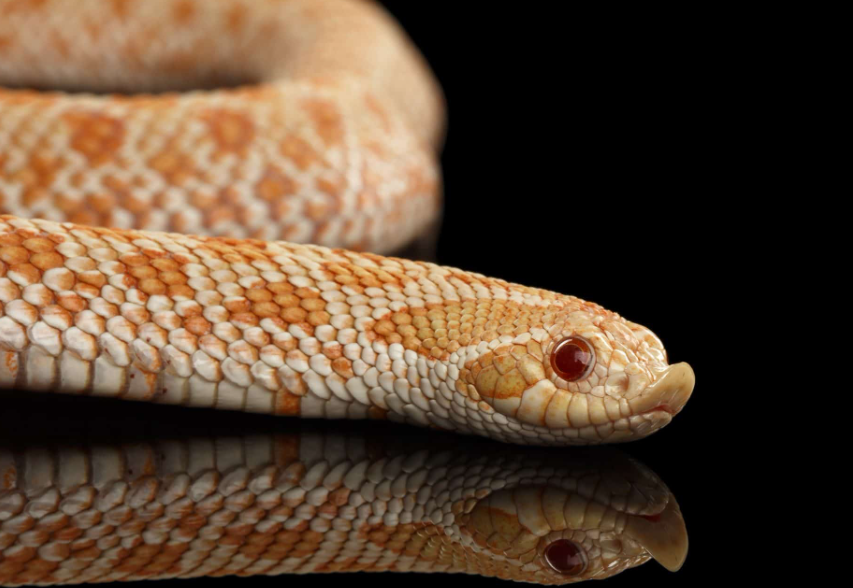Western Hognose snakes are fascinating pets known for their unique defensive behaviors, such as playing dead and mimicking rattlesnakes. They are relatively easy to care for, making them great for beginner and intermediate reptile enthusiasts. Here’s everything you need to know to keep your Western Hognose snake happy and healthy!
Habitat & Husbandry
Enclosure: A 36″x18″x18″ (40 Gallon) is the minimum tank size for a single Western Hognose snake. They are solitary animals and should be housed alone. Keep in mind that the females get larger than the males, so make sure you upgrade if you have a female!
Substrate: Hognose snakes love to burrow, as seen by their adorable little noses! Make sure you provide 4-6 inches of substrate for them to act on this behavior. A mix of topsoil and playsand is a great option since they don’t need a super high humidity.
Temperature: Maintain a warm side at 85-90°F (29-32°C) and a cool side at 75-80°F (24-27°C)3. Use a heat lamp and a thermostat to regulate the temperature.
Humidity: Keep humidity levels around 40-60%. Provide a shallow water dish that the snake can soak in if they please!
Lighting: Since hognose snakes are diurnal, they need UVB lighting for their well-being. Remember to replace the bulb every 6-12 months, as they lose effectiveness over time.
Feeding & Supplements
Diet: Feed your snake frozen rodents, such as pinkies or fuzzies. This will depend on their size, so upgrade accordingly as they grow.
Feeding Schedule: Juveniles should be fed every 5-7 days, while adults can be fed once every 7-10 days.
Supplements: Dust the rodents with a calcium supplement every other feeding and a multivitamin once a month.
Health & Maintenance
Cleaning: Spot-clean the enclosure daily and perform a full substrate change every few months. This is if you are not setting up your snake’s enclosure bioactively. You can learn how to set up a bioactive enclosure here!
Health Issues: Watch for signs of illness such as lethargy, loss of appetite, or skin abnormalities. Consult a vet experienced with reptiles if needed.
Decoration: Provide hiding spots, such as caves or hollow logs, and sturdy branches for climbing. They will use all of the enrichment you give them!
Handling: Western Hognose snakes are generally docile and tolerate handling well. Handle them regularly but gently to build trust. Be aware that Western Hognose snakes are rear-fanged venomous, so if they happen to nibble on you, you may experience some swelling. Otherwise, their venom is not harmful to humans.
Conclusion
Western Hognose snakes are indeed fascinating pets with their unique defensive behaviors and manageable care requirements. Their distinctive traits, such as playing dead and mimicking rattlesnakes, add to their charm, making them a captivating choice for both beginner and intermediate reptile enthusiasts. By providing the appropriate habitat, diet, and care, you can ensure your Western Hognose snake remains happy and healthy. Remember to regularly monitor their environment and health, and consult with a reptile-savvy vet if any issues arise. With the right care and attention, your Western Hognose snake can be a delightful and rewarding companion. Have fun!

Leave a Reply